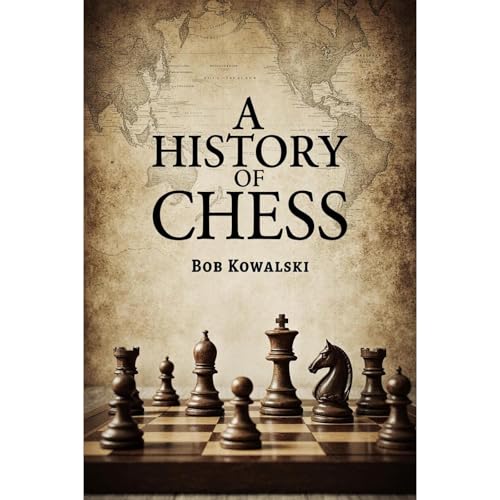
A history of chess
No se pudo agregar al carrito
Solo puedes tener X títulos en el carrito para realizar el pago.
Add to Cart failed.
Por favor prueba de nuevo más tarde
Error al Agregar a Lista de Deseos.
Por favor prueba de nuevo más tarde
Error al eliminar de la lista de deseos.
Por favor prueba de nuevo más tarde
Error al añadir a tu biblioteca
Por favor intenta de nuevo
Error al seguir el podcast
Intenta nuevamente
Error al dejar de seguir el podcast
Intenta nuevamente
$0.00 por los primeros 30 días
Escucha audiolibros, podcasts y Audible Originals con Audible Plus por un precio mensual bajo.
Escucha en cualquier momento y en cualquier lugar en tus dispositivos con la aplicación gratuita Audible.
Los suscriptores por primera vez de Audible Plus obtienen su primer mes gratis. Cancela la suscripción en cualquier momento.
Compra ahora por $3.99
-
Narrado por:
-
Virtual Voice
-
De:
-
Bob Kowalski

Este título utiliza narración de voz virtual
Voz Virtual es una narración generada por computadora para audiolibros..
The Renaissance period was marked by significant changes in the rules of the game, especially with the strengthening of the queen, and by the publication of manuals that consolidated chess technique and theory. Kowalski also portrays the influence of European cultural cafés, where thinkers and chess players refined the game, establishing the foundations of modern positional thinking.
In the 19th century, the author highlights the romanticism of chess, characterized by tactical styles and dramatic games by masters such as Anderssen and Morphy, as well as the organization of the first international tournaments and the formalization of the rules. He also points to the emergence of modern chess with Wilhelm Steinitz, who introduced a scientific approach, and the growth of the specialized press, which popularized the game.
Bob Kowalski devotes special attention to the 20th century, highlighting the importance of chess as a political tool during the Cold War. Soviet dominance, with champions such as Botvinnik, Tal and Spassky, provided a stage for ideological rivalry, symbolized by the historic match between Fischer and Spassky in 1972. The rivalry between Karpov and Kasparov in the 1980s is also presented as a landmark of professionalism and competitive intensity in chess.
With the arrival of the digital age, Kowalski shows the transformation of chess in the face of technology, from Deep Blue's victory over Kasparov to the impact of computer programs such as Stockfish and AlphaZero. Online platforms and live broadcasts have revolutionized the way the game is played and consumed, expanding its reach and popularity.
In the 21st century, the book emphasizes the growing diversity of chess, the rise of champions such as Magnus Carlsen and the presence of the game in popular culture, especially after the success of the series The Queen's Gambit. Kowalski also addresses the increasing inclusion of women in the sport and the challenges for the development of chess in regions such as Latin America.
Finally, the author looks at the future of chess, discussing emerging technologies such as virtual reality and the metaverse, and the ethical challenges related to the use of artificial intelligence, highlighting the importance of preserving the human and creative essence of the game.
A History of Chess is a work that goes beyond the simple account of a game. Bob Kowalski presents chess as a mirror of human evolution, which synthesizes strategy, adaptation and creativity, maintaining its role as a cultural bridge between different peoples and eras.
Todavía no hay opiniones


